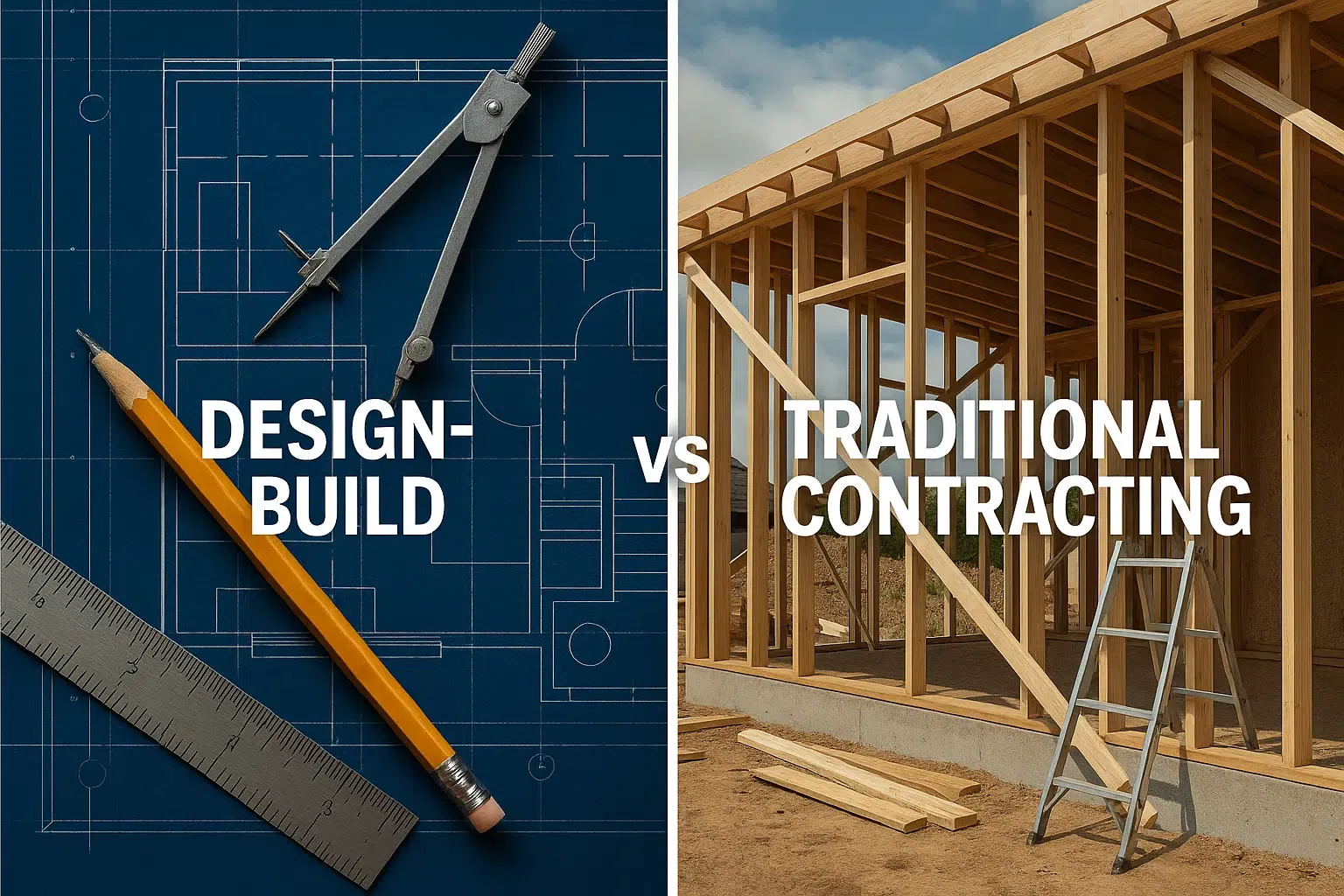Design-Build or Traditional Contracting?
When planning a major renovation or addition, one of the first questions Toronto homeowners face is:
Should I choose a design-build firm, or go the traditional design-bid-build route?
Both methods can deliver a finished project, but the path you take affects timelines, accountability, costs, and stress levels.
At Woodsmith Construction, we’ve seen first-hand how the design-build approach creates smoother, more predictable results for Toronto’s aging housing stock.
What Is Traditional Contracting?
Traditional contracting — also known as design-bid-build — separates the project into distinct phases:
Hire a designer or architect to complete drawings.
Put the project out to bid with contractors.
Select a builder to execute the design.
This process has been the industry standard for decades. It works best when a homeowner wants strict separation between design and construction, but it also introduces risks.
Pros
Competitive bidding can reveal market rates.
Clear separation of designer and builder roles.
Works well for architect-driven projects.
Cons
Timelines stretch: design must fully complete before construction.
Higher chance of miscommunication between parties.
Homeowner often becomes the mediator if disputes arise.
Cost overruns are common when plans meet real-world site conditions.
What Is Design-Build?
With Design-Build, one firm manages both design and construction under a single contract. Designers, engineers, and builders collaborate from day one, giving homeowners a single point of contact and accountability.
This integrated approach speeds up timelines, prevents costly surprises, and reduces the finger-pointing common in traditional models.
Why Homeowners Choose Design-Build
One Team, One Contract: Simplifies communication and responsibility.
Faster Timelines: Overlapping design and construction phases can cut project length by months.
Smarter Budgeting: Costs are reviewed during design, not after.
Reduced Risk: The design-build firm absorbs responsibility for drawings and execution.
Better Collaboration: Decisions are made faster and with fewer conflicts.
Studies suggest design-build projects can be 30–35% faster and reduce cost growth by up to 10–20% compared to traditional contracting
Side-by-Side Comparison
| Design-Build | Traditional Contracting | |
|---|---|---|
| Accountability | One contract, one team | Split between designer & contractor |
| Timeline | Faster – phases overlap | Slower – linear sequence |
| Budget Control | Costs validated during design | Costs only known after bidding |
| Owner’s Role | Guided partner in process | Often mediator between parties |
| Risk | Absorbed by DB firm | More risk falls on homeowner |
Toronto’s Renovation Challenges
Toronto’s older homes — especially in Leslieville, Riverdale, and the Beaches — add complexity:
Hidden Foundations & Rubble Walls: Unknowns under 100-year-old basements.
Party-Walls & Tight Lots: Construction access and structural tie-ins.
Heritage & Bylaws: Permits and zoning can stall projects if not managed early.
Aging Systems: Old wiring, plumbing, and insulation require integrated planning.
Design-build shines in this environment because surprises are handled by a unified team — not passed back and forth between designer and builder.
Real Example: The Herbert Project
In Toronto’s Beaches, our team transformed a 100-year-old semi-detached brick home by adding a full third floor and underpinning the basement.
Because design and construction teams were integrated, we could:
Adjust a steel beam placement mid-design without triggering delays.
Pivot structural solutions during permitting without halting progress.
Keep the project on track, finishing weeks earlier than a traditional process would allow.
This is the design-build advantage: flexibility without chaos.
Risks of Design-Build — and How to Manage Them
| Risk | Why It Happens | How We Mitigate at Woodsmith |
|---|---|---|
| Scope creep | Overlapping phases encourage midstream changes | Clear decision gates, capped allowances, client approvals |
| Budget uncertainty early | Costs shift as design develops | Continuous cost estimates, contingency planning |
| Owner control concerns | DB team leads coordination | Regular reviews, transparent milestones, open-book costing |
| Permitting surprises | Toronto’s zoning/heritage rules | Early code research, in-house BCIN design expertise |
FAQs: Homeowner Questions About Design-Build
FAQs: Homeowner Questions About Design-Build
Is design-build more expensive?
What if I already have an architect?
Will I lose control over design?
Does design-build work for smaller projects?
Why Woodsmith Construction Leads With Design-Build
At Woodsmith Construction, we specialize in East Toronto’s older homes, where a design-build approach is not just an advantage — it’s often essential. Our clients choose us because we bring:
BCIN-Licensed Design combined with hands-on building knowledge.
Award-Winning Work, including the Herbert Project, winner of the BILD Innovation Renovation Award.
Net Zero Expertise, helping clients modernize sustainably.
Deep Local Knowledge of Toronto’s unique housing challenges.
Ready to Explore Design-Build?
If you’re weighing design-build vs traditional contracting, ask yourself: Do I want to coordinate separate teams, or would I rather trust one partner to manage it all?
👉 Let’s talk about your project. Contact us today to see how our design-build team can simplify your renovation and deliver a home that blends history with modern living.







